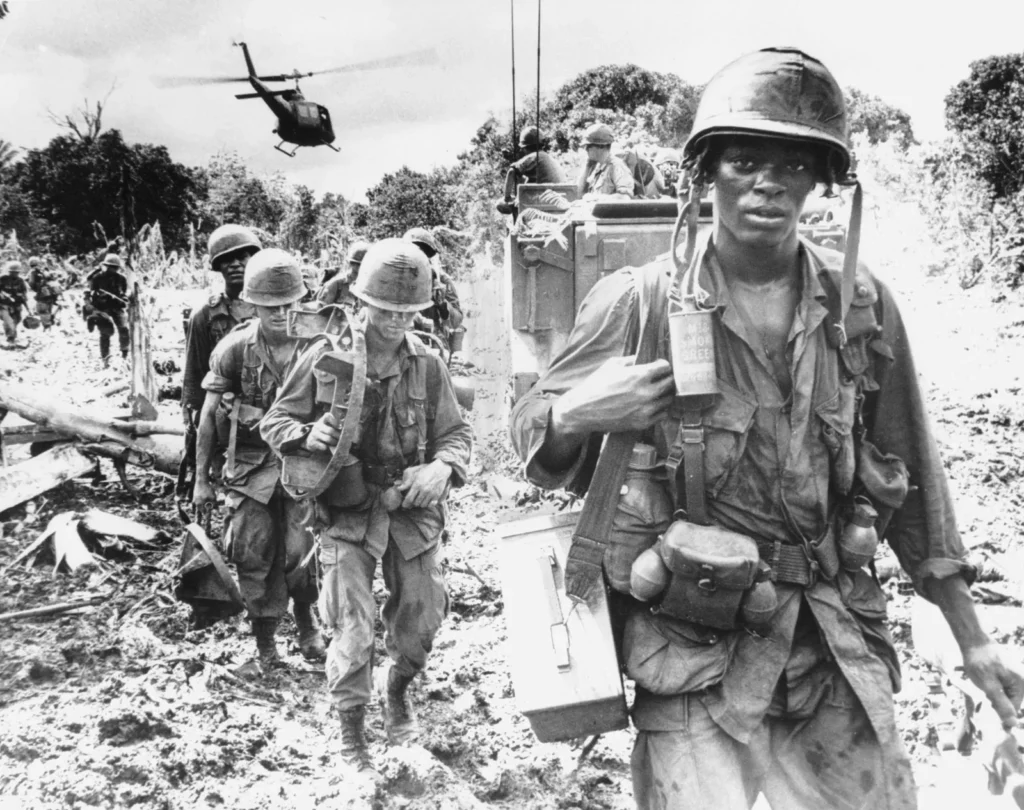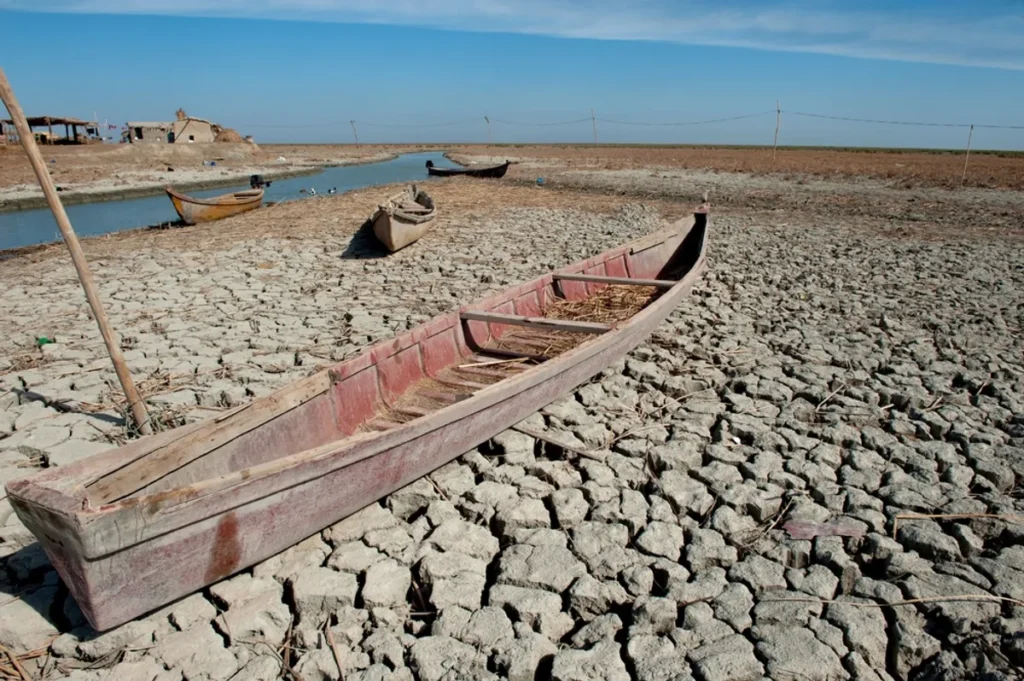
Brief Overview of the Vietnam War
Occurring from 1955 to 1975, the Vietnam War was a prolonged, intense military conflict that pitted the Communist North, led by the Democratic Republic of Vietnam and the Viet Cong, against the South, the Republic of Vietnam, largely supported by the United States. The conflict erupted due to rising disagreements over the process of reuniting Vietnam, previously divided at the 17th parallel, following French colonisation, evolving into a clash of ideological beliefs. The war left deep socio-economic and political scars.
Causes of the Vietnam War
Decolonization and the Cold War
The aftermath of World War II witnessed the globe splitting into two spheres of influence, namely the democratic capitalist West led by the United States and the communist East guided by the Soviet Union. This global tension, known as the Cold War, drastically intensified in postcolonial nations seeking political identities. In this context, Vietnam, freshly decolonized from French control, transformed into a battleground as the communist North, supported by the Soviet Union, and the anti-communist South, backed by the US, vied for supremacy. This ideological conflict between democracy and communism acted as a key catalyst in igniting the devastating Vietnam War.
Domino Theory and American Intervention
During the Cold War, U.S. policymakers embraced the ‘Domino Theory’, purporting that if one state in a region came under the influence of communism, its neighboring territories would inevitably follow suit. Essentially, this ideological framework formed the bedrock for the American intervention in Vietnam. Convinced that losing Vietnam to communism would trigger similar transitions in neighboring Southeast Asian nations, the U.S. began escalating its military engagement in the region after 1950. The U.S.’s robust anti-communist stance led to the deployment of ground troops in 1965, marking the commencement of a major combat phase in Vietnam.
The Gulf of Tonkin Incident
In August 1964, an encounter between North Vietnamese vessels and the USS Maddox in the waters of the Gulf of Tonkin sparked a series of events that escalated U.S. involvement in Vietnam. The U.S. government claimed two separate attacks on its ship took place, and in response, Congress passed the Gulf of Tonkin Resolution. This resolution gave President Lyndon B. Johnson the power to use military force without formally declaring war. Often considered a significant turning point, this incident played a pivotal role in the escalation of American participation, subsequently leading up to the full-scale deployment of combat troops in the Vietnam conflict.
Course of the War
Key Battles and Operations
The Vietnam War was characterized by numerous significant battles and operations. The Gulf of Tonkin incident (1964) marked a fundamental turning point, escalating US involvement. This was followed by notable events such as the Tet Offensive in 1968, where North Vietnamese forces launched a massive surprise attack, deeply shocking U.S. and South Vietnamese forces and severely impacting public opinion back in America. Another major chapter was Operation Rolling Thunder (1965–68), a strategic bombing campaign by the U.S. that aimed to cripple North Vietnam’s ability to wage war. However, the incendiary bombing campaign received international criticism and was fraught with strategic limitations. The Easter Offensive (1972), a big push by Northern forces, and subsequent peace negotiations were significant towards ending the conflict. Each battle and operation contributed significantly to the shifting dynamics of the tense conflict.
Role of the Viet Cong and North Vietnamese
The influence and strategies of the Viet Cong and North Vietnamese proved significant throughout the conflict. To combat US and South Vietnamese forces, they waged an unconventional guerrilla war that involved stealth, surprise attacks, booby traps, and ambushes, inflicting heavy casualties. They seamlessly merged into the local population, making it challenging to distinguish between civilians and combatants. The North Vietnamese also deployed a system of intricate, underground tunnels, enabling shelter, communication, supply routes, and combat operations. Additionally, they were instrumental in the Tet Offensive in 1968, generating devastating psychological impact on the US public and thus reshaping the conflict’s trajectory.
US Strategy and Tactics
Throughout the duration of the conflict, American military strategy revolved largely around attrition warfare, aiming to inflict heavy casualties on North Vietnamese forces to force them into submission. A variety of tactics were employed, including massive bombing campaigns coded ‘Operation Rolling Thunder’, free-fire zones, and chemical warfare with the use of Agent Orange. However, these approaches often failed to distinguish between combatants and civilians, leading to massive civilian casualties and ultimately contributing to the growing anti-war sentiment back home. Additionally, the U.S. forces struggled to adapt their conventional warfare methods to deal with Viet Cong’s guerilla warfare, leading to significant difficulties on the battlefield.
Impact on Vietnam
Effect on Vietnamese Society and Economy
The armed conflict in Vietnam from 1955 to 1975 wreaked devastating chaos on the country’s societal framework and economic stability. The war claimed over a million lives, leaving countless Vietnamese families grieving and neighborhoods devastated. The conventional infrastructure crucial for everyday life, such as schools, hospitals, and roads, was heavily damaged or destroyed. Militarization, rampant in society due to the war, continually interrupted normal social functioning. Economically, Vietnam was crippled; agriculture, the nation’s primary industry, was utterly disrupted as the war converted fertile fields into battlefields. Additionally, heavy bombing, defoliation campaigns, and chemically-laced weapons contaminated the environment, significantly impacting post-war agricultural recovery. The war also induced severe inflation and unemployment due to unrestrained military expenses and industrial disruption. Recovery required massive international aid and decades of rebuilding. The profound societal and economic effects of the war largely shaped the avenues of modern Vietnam’s development.
Physical and Environmental Impact
The devastation caused by the Vietnam War drastically impacted the nation’s physical landscape and its environment. Vast areas of land were denuded due to the extensive use of Agent Orange and other herbicides, wiping away significant areas of forest cover and biodiversity. The chemical warfare led to long-lasting effects, severely poisoning human and animal populations; its effects are still visible in the form of birth defects and cancer cases. The widespread bombing caused severe physical disruption, resulting in nearly 15 million acres of agricultural land being destroyed, impairing the country’s ability to produce food. Additionally, the use of napalm and bulldozers obliterated entire villages, displacing large sections of the population. Decades later, unexploded ordnance continues to pose a threat, endangering lives and discouraging development in infested areas. Over time, the nation has struggled with the significant task of environmental restoration and rebuilding habitats destroyed in the conflict.
Impact on the United States
Changing Public Opinion and Anti-War Protests
During the prolonged conflict, sentiment within America began to shift dramatically. Initially, there was general support for U.S. intervention, guided by Cold War ideologies. However, as the war dragged on with no clear victory in sight, coupled with skyrocketing costs and an increasing death toll, public opinion started to radically change. The government’s beleaguered justifications for continued combat, augmented by graphic media coverage broadcasting the war’s harsh realities into American living rooms, ignited widespread disapproval, dissent, and protests. The nation, particularly its youth, spoke out vociferously, staging countless anti-war protests and violent demonstrations. Notable instances include the mass protest rallies in Washington, D.C., in 1969 and 1971, and campus violence, such as the Kent State University shooting in 1970. These unprecedented domestic pressures eventually influenced political decision-making, culminating in the U.S. withdrawing its forces in 1973. Thus, the war’s legacy remains undoubtedly far-reaching, engendering a deep-seated cynicism towards government and forever changing the nation’s sociopolitical landscape.
Impact on U.S. Foreign Policy
The Vietnam War had profound implications for the United States’ foreign policy. The war was a significant turning point, moving the country away from its Cold War containment policy, signified by the Truman Doctrine and the Marshall Plan, into a more complex and challenging international landscape. The war raised doubts about the U.S.’s moral leadership and credibility, not only among its allies and competitive nations but also domestically. Washington faced criticism for its role in Vietnam, leading to a more circumspect approach to international conflicts, later known as the Vietnam Syndrome. Moreover, this period marked the commencement of a power shift from the presidency to Congress regarding war authorization, culminating in the War Powers Resolution of 1973, a firm legislative act to avoid another protracted and unpopular war like Vietnam. Thus, the war deeply shaped America’s future conduct in global affairs, fostering a more cautious and congressionally-checked approach.
Conclusion
Summary of Key Points
In the final analysis, the Vietnam War was a significant conflict in the Cold War era, marked by intense fighting, costly expenditures, and heavy casualties. It resulted in profound societal and political changes worldwide, not least in the United States and Vietnam itself, all while escalating geopolitical tensions.
Lasting Consequences of the Vietnam War
The Vietnam conflict left an indelible footprint on the collective global psyche, marked by lost lives, societal upheaval, and political ramifications. Traces of Agent Orange’s environmental destruction and civilians’ PTSD are still palpable, while the war greatly altered the international relations landscape, forming our contemporary status quo.



